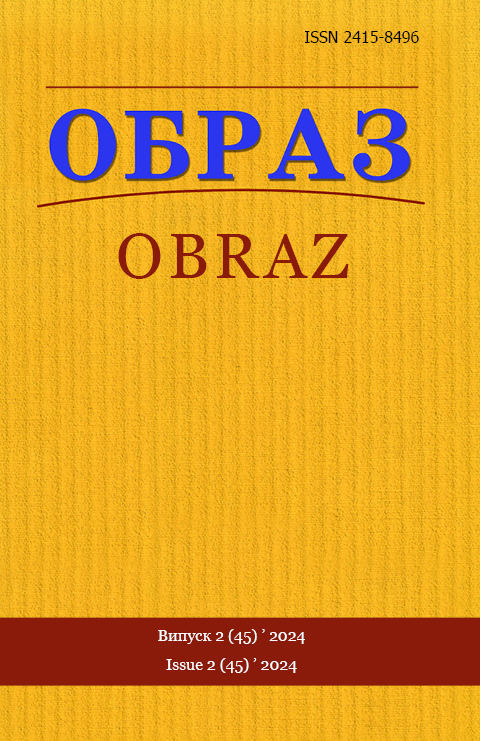Abstract
Introduction. The COVID-19 pandemic has triggered a surge in existing anti-vaccine sentiments in Ukraine, posing a threat to public health. This study aims to analyze the anti-vaccine campaign in the Ukrainian blogosphere, which intensified during the pandemic and coalesced around issues related to the coronavirus.
Relevance of the study. The relevance of the study is determined by the increasing popularity of anti-vaccine sentiments in Ukraine, which are facilitated by the growing influence of the blogosphere as a powerful channel for disseminating destructive content. The study aims to identify the key categories that bloggers appealed to while conducting the campaign against vaccination for coronavirus disease in Ukraine during the COVID-19 pandemic.
Methodology. To determine the most influential representatives of the anti-vaccine movement in Ukraine, a media monitoring was conducted focusing on the exposure of fakes and misinformation regarding COVID-19. A list of the channels of the most popular Ukrainian bloggers who are corona-skeptics and opponents of vaccination was compiled. Subsequently, 232 videos published on these bloggers’ channels were studied. The content analysis method was applied to identify the key messages and calls used by vaccination opponents.
Results. The most popular representatives of the anti-vaccine movement in Ukraine were found to be lawyers, pseudo-experts, citizen journalists, and proponents of conspiracy theories. The media activity of anti-vaccination bloggers was recorded throughout the entire pandemic of the coronavirus disease in Ukraine and for some time after its end. The chronology and reasons for the main surges in their activity and audience interest are revealed. The study identified the most common categories appealed to by bloggers in the anti-vaccination campaign, as well as their calls to action and objects of their criticism.
Conclusions. The study demonstrates that Ukrainian vaccination opponents politicize vaccination issues, actively using conspiratorial rhetoric. The key categories of coronaskeptics bloggers’ messages include violations of rights (both fundamental rights and rights to work, choice, etc.), safety (of vaccines or the disease itself), conspiracy theories and moral. The most popular appeal of vaccination opponents is to “think critically” and not comply with requirements related to vaccination or quarantine restrictions. The main objects of criticism are authorities, various institutions, and the media. Further investigation into the discursive strategies of anti-vaccine campaigns will contribute to the formation of an effective counter-narrative.
References
1. Babii I. (2020), «The Ukrainian blogosphere as a reflection of socio-cultural processes» Materials of the All-Ukrainian scientific-practical conference with international participation «Totalitarianism as a system of destruction of national memory», Lviv, Ukraine. 16–19.
2. Zadorozhna, V., Frolov, A. & Moiseieva, H. (2011), The question of bioethics in the problem of immunoprophylaxis, Intehratyvna Antropolohiia [Integrative Anthropology], vol. 1, no. 17. pp. 43–46.
3. Zubar P. (2024), «The Role and Structure of Conspiracy Theories in the Discourse of Coronasceptics in Ukraine», Naukovi zapysky Instytutu zhurnalistyky [Scientific Notes of the Institute of Journalism]. vol. 84, № pp. 118–134.
4. Moroz O. (2021), «Renaissance of Ukrainian YouTube. How the era of pro-Russian channels in Ukraine ends. The Research», available at: https://www.pravda.com.ua/articles/2021/11/24/7314996 (accessed 01 June 2024).
5. Oksymets O. (2021), «The anti-vaccination movement in Ukraine: who is who, how influential they are and what their narratives are», available at: https://imi.org.ua/monitorings/antyvaktsynatorskyj-ruh-v-ukrayini-hto-ye-hto-naskilky-vony-vplyvovi-ta-yaki-yihni-naratyvy-i43016 (accessed 01 June 2024).
6. Polovynchak Y. (2015), «Features of functioning of Ukrainian blogosphere», Science and Education a New Dimension. Humanities and Social Sciences, vol. 3, no. 42. pp. 99–102.
7. National Security and Defense Council of Ukraine (2021), «Report of the Center for Combating Disinformation at the National Security and Defense Council of Ukraine «Anti-vaccine propaganda – information campaign against Ukraine».
8. Fiialka S. (2018), Media literacy of Ukrainians on vaccination issues. Tekhnolohiia i tekhnika drukarstva. 2018. № 2(60). pp. 41–49.
9. Chudutova, D. & Ustinov, O. (2010), «Vaccination by age, state of collective immunity and anti-vaccination campaigns: current situation in Ukraine», Ukrainskyi medychnyi chasopys [Ukrainian medical journal], vol. 5, no. 79. С. 33–36.
10. Boreiko, Y., Kulakevych, M. & Fedotova, T., (2022), «Church and the COVID-19 pandemic in Ukraine: Vaccination as a challenge», Human and Religious Studies Bulletin, vol. 19, no. 1, pp. 12–15
11. Dmytruk V. I., Zaslavska H. O. (2017), «Immunoprophylaxis of infectious diseases in children: achievements and problems. Anti-vaccine movement as a barrier factor in immunization of the population.», Аctual infectology. vol. 5, no. 4. pp. 166–171. URL: https://doi.org/10.22141/2312–413x.5.4.2017.115728
12. Keegan K. (2022), «Clarity for friends, confusion for foes: Russian vaccine propaganda in Ukraine and Serbia» Harvard Kennedy School Misinformation Review. URL: https://doi.org/10.37016/mr-2020–98.
13. Zakharchenko, O., Avramenko, R., Zakharchenko, A., Korobchuk, A., Fedushko, S., Syerov, Y. & Trach, O., (2022), «Multifaceted Nature of Social Media Content Propagating COVID-19 Vaccine Hesitancy: Ukrainian Case». Procedia Computer Science 198, pp. 682–687. URL: https://doi.org/10.1016/j.procs.2021.12.306.

This work is licensed under a Creative Commons Attribution 4.0 International License.

